The Fashion Design Process – Concept to Design
Category | June 05, 2021

The Fashion Design Process, unlike what non-fashion designers and the uninitiated think, it is definitely not just out of the box thinking, nor bringing up glorious ideas by magic, out of the big blue sky! (*Pun Intended)
Rather, let us think of it as a constructive process, building it up block by block all the way from unravelling the Concept to adding up the building blocks through the design and research processes till one glorious day we present our final set of designs. So, without further ado, here is the design process steps:-
- Conceptualization & Boards
- Conceptual Direction – Understanding and Summarizing the Concept
- Design Research & Idea Generation
- Sourcing – Fabrics and trims
- Design Development
- Final Design Presentation
*One piece of my two pence I can give to fashion designers here is never to think of a final design/product till step 5 whatsoever, as that would limit us from probably working out more combinations of the designs by creating mind blocks from thinking of further/various/more possibilities in future steps
Step 1 – Conceptualization & Boards
Now there are two ways to work around this, most individual/small boutique/some designers create a Fashion concept inspired by their random fairy tale or events or any other method they seek inspiration from. Usually this revolves around a story.
Many a time, I myself have been inspired through music, lyrics in many songs, the video presentation of songs, events etc., and yet it is a good idea to follow up on atleast some of the methods mentioned below
The second method is a far more meticulous method which involves the following process:-
Forecast Research – Understanding possible designs and design directions provided by many organizations. Some of the foremost fashion forecasting organizations such as WGSN, Promostyl, etc. provide excellent forecasts for up to four seasons ahead with an extensive design research and direction for many design organizations to follow. But, it depends on the following organization/designer to decide the particular direction he/she wants to follow based on their design principles and etiquettes. After all, each designer/brand have their own design principles on which they have created their brand name/legacy, and the above forecasting organizations only provide possible ideations, fabrics, details, silhouettes, colours and design directions that could be inspired from in the coming seasons, which the fashion world might look up to, so, lets say, this is a safe – marketable approach to be inspired from.
Market Research – It is always a great idea to see and understand what each brand/label is doing in terms of colours, silhouettes, fabrics, details, etc. and infer ourselves how these ideas can be made better or the possible directions which might evolve, which are to follow in the coming seasons, so that we don’t get left behind in the competition. This can be done both, through actual visits to the brand/label stores and/or visit their web spaces as well. This also gives us an idea of the marketable efficient/feasible costing approach.
Competitive Brand Research – Well, This, and the Market Research, lets say are interrelated and can be done simultaneously; and in the same process. But it is always a good habit to identify your competitors and understand to what they are up to, to always work around in bettering our designs to get ahead of the race.
Forecasting based on the above research – After collecting the data, we hit back to our thinking boards to put the data together to understand – the current trends in general in the market, how our competitors are planning the product mix and how they wish to penetrate the market, by looking back to the trends to atleast 2-3 seasons, we can infer the upcoming trend direction, we can understand the local and global direction of the trends and understand the direction we need to follow locally and globally towards a feasible marketable product mix.
With the above collective data in hand and the forecast report (if and when done) we need to understand the trends followed by the market locally and globally; and relatively form the direction and concepts we wish to follow. Inspirations need not necessarily be copied from the trend reports, rather we can relatively work around it, adding to it with our own design philosophies and directions.
Following the imagination of the concept or the story woven from either all of the above data or from our own imagination/inspiration, we next go on to describe our concept in a set of words, which we call Keywords for the collection, attaching the moods, weaving out the story to understand the concept such that we transform our concept to words which can transformed to metaphoric pictorial elements, for example: if our concept is inspired from the Bonneville Salt flats, Utah near Nevada, it is an area known for racing, speed tests, large plain masses of salt beds – so here may be our initial keywords – salt/salt beds, racing, speed, engines, heat, motor, thrill, record breaking, flat, sweaty, hot, etc. so physical elements such as salt/salt beds, large plain masses, engines, motor; whereas our emotional/mood elements can be thrill, record breaking, sweaty, heat, etc. So, how would one like to pictorially describe the above keywords is our next step.
Once we have the imagery idea in our mind, the final step is to present our conceptualization – namely the Boards. There are quite a few number of boards required by the fashion industry but each organization/brand/label have their own way of presenting and choose to make the necessary boards, some of them are inspiration/theme boards, mood boards, story boards, look boards (although look boards can come at a later time, ie. post the design research step), etc. We put the imagery in an aesthetically understandable composition so that our readers/buyers can understand the direction we wish to follow.
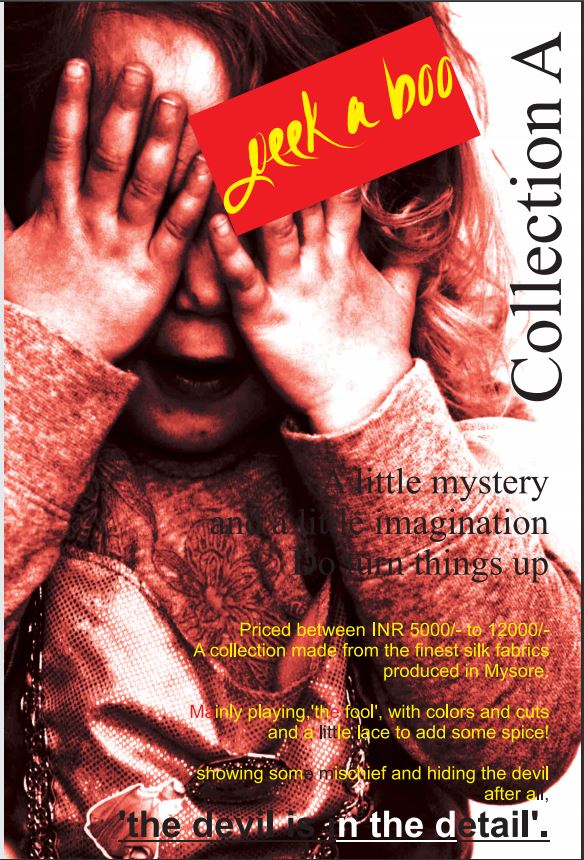

Showing some inspiration/theme boards from my earlier collections, the left is an affordable wear collection called, ‘Peek a Boo‘, whereas the right image is an inspiration/theme board from my pret collection called, ‘the crow, the sparrow and the dragonfly herald’. By the compositions we can understand that Peek a Boo is a slightly naughty collection whereas the the crow, the sparrow and the dragonfly herald is inspired by these simple green loving creatures which are fast disappearing from our ever growing urban spaces as we humans have been encroaching upon their spaces.
Step 2 – Conceptual Direction – Understanding and Summarizing the Concept
Now, this is a small step post the Boards but important nonetheless. At this juncture we start to brainstorm about the concept to establish the direction of design. We use methods such as brain mapping techniques and/or expand on the concept as a story or summarise about the concept. We could start by brainstorming on the keywords generated in the previous step and attach physical entities such as details/colours/silhouette styles which harness the concept to understandable elements in relation to the keywords. Usually this shouldn’t take more than a few days, but it gives us a better direction about the final look of our designs. Here, we can also work on story boards and a descriptive look board. (To understand the style of the look board or look book, one of the best examples I can give is the upcoming trends spreads and looks of the season which is usually a 3-4 page spread in most fashion magazines such as Vogue or Harpers Bazaar, etc.)
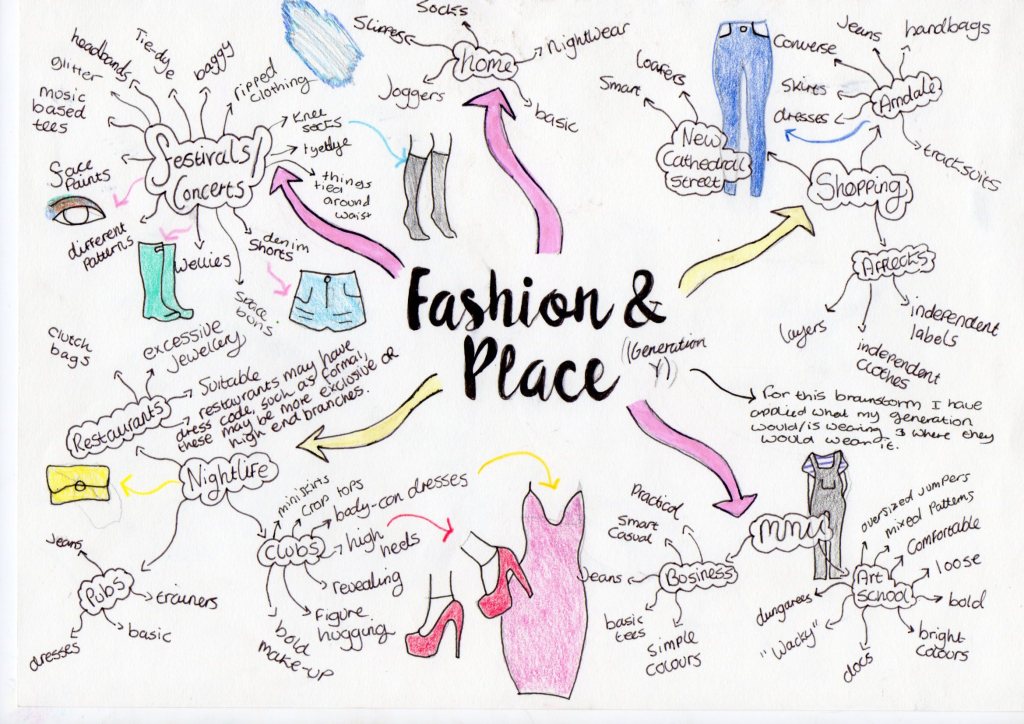
I have just attached an image of brain storming from the site – https://oliroses.wordpress.com/2016/01/11/fashion-status-place/ . Although this is quite amateur, for the uninitiated, this is good reference. The Keywords are the chat/cloud bubbles and their expansion can be seen illustrated well.
Step 3 – Design Research and Idea Generation
This is an important step that encompasses the research from all previous steps to further expand from the previous step. Based on previous research, the designer will/can break upon the collection to be designed in elements (For reference, you can check my previous Blog about the ‘The elements of Fashion Design‘). The designer will need to ideate (idea generation) in terms of all possible detail ideas, colours to be incorporated, silhouette styles, fabrics and all possible surface (2D & 3D) to be incorporated into the product mix (not related to any particular product, rather all ideas broken up in elements and generated) in relation to the brainstorming sessions and keywords generated for the concept. For example: He/She can start thinking of the various styles of pockets, collars; whether to use a silk or cotton fabric, etc. which relate to our concept as well as the forecast (in case of forecast following brands/labels)
Personally, I have made it a habit to maintain the black book for every collection I make which is filled with keywords, anecdotes, brain storming, inspirational imagery and research for each collection I work on.
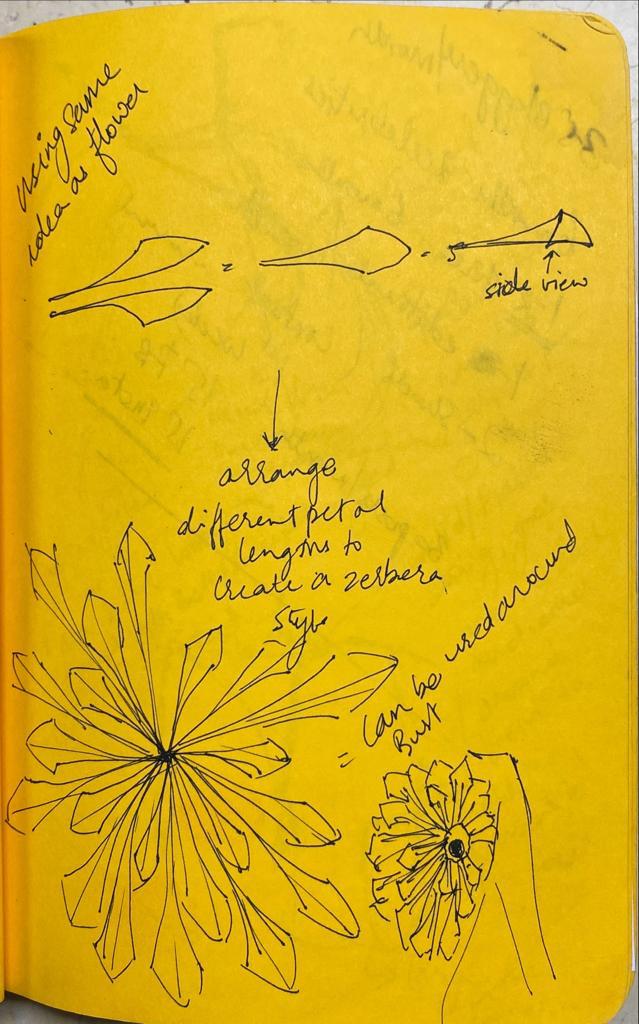

Here is an image of from the movie, ‘The Devil Wears Prada’, with the infamous Miranda Priestly (dragon lady) carrying a Book, what she calls the Mock-Up of each edition, or in Short – The Black Book. Image sourced from – https://www.billboard.com/articles/news/8530281/devil-wears-prada-musical-pre-broadway-premiere-chicago-next-summer
Step 4 – Sourcing – Fabrics and trims
With an idea and direction towards the upcoming collection plan in mind, before we finalize the designs or go to actualization of the design development, or in short, before we start working on the complete designs, we start looking at all kinds of fabrics and trims possibilities for the collection. Here, we start scouting the the markets, wholesalers, retailers, manufacturers of fabrics and trims of all possibilities for of usage for the coming collection.
Alternatively, we can also produce surface/fabric designs, etc. such as prints, weaves, knits, motifs, accessories (if needed) and possibilities of combination of surface ornamentation to be possibly used for the collection.
*But please note that we still are not looking towards designing the final ensembles, rather creating the various permutations and combinations of elements for putting together a product, which will happen at a later point of time.
Here we can create the Look Board/Look Book by putting together the various permutation of combination of elements that the designer has brought in.
Please note:- We are looking at all possibilities in relation to the concept developed till this juncture immaterial of it’s usage or note.
Its usually a good practise to go to the next step ie. the design development by being sure of all the materials in hand and their availability as any design which cannot be manufactured due to the non availability of materials is no more precious to us than an a** wipe (pun intended)
Step 5 – Design Development
Now, finally! This is the point wherein the designer can actually start thinking of putting together all the ideas he/she has gathered from the research and development of all of the above steps and puts together all combinations (can add few extra ideas generated at the moment as well but, I wouldn’t advise it altogether) of possible final products. Again, here when we think of a collection, we design entire ensembles together and/or the products individually. We develop fashion illustrations either by hand or digitally. We call these illustrations croquis (croqui in singular, pronounced crow-key). Sometimes, to just finalise a collection of lets say 6-8 ensembles, we might design even hundreds of croquis with an open mind of yet, not to finalise the final collection altogether.
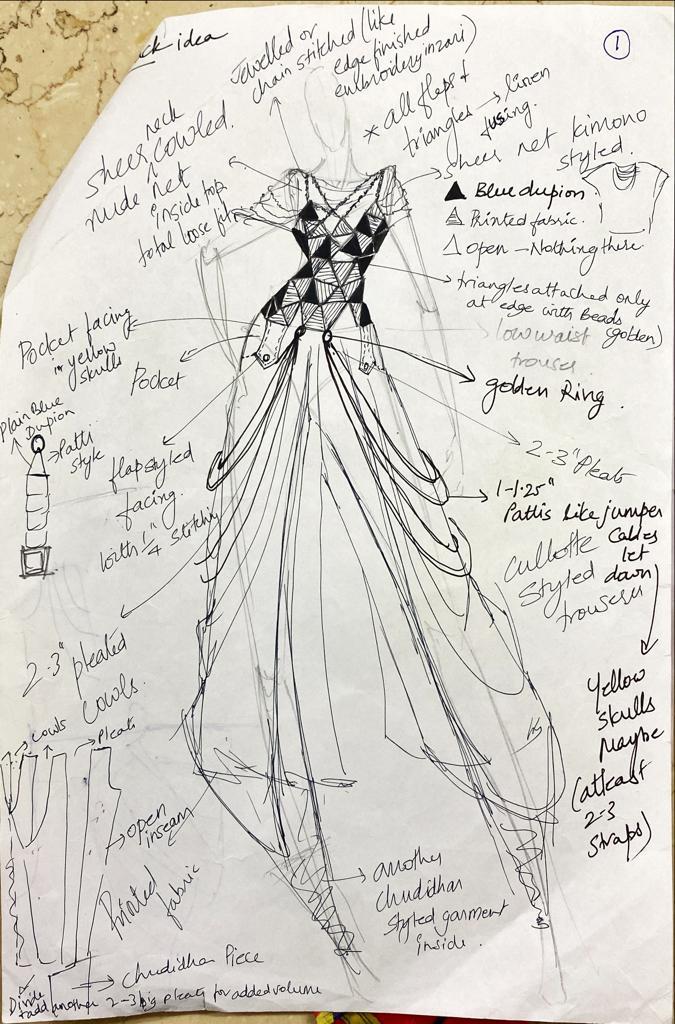
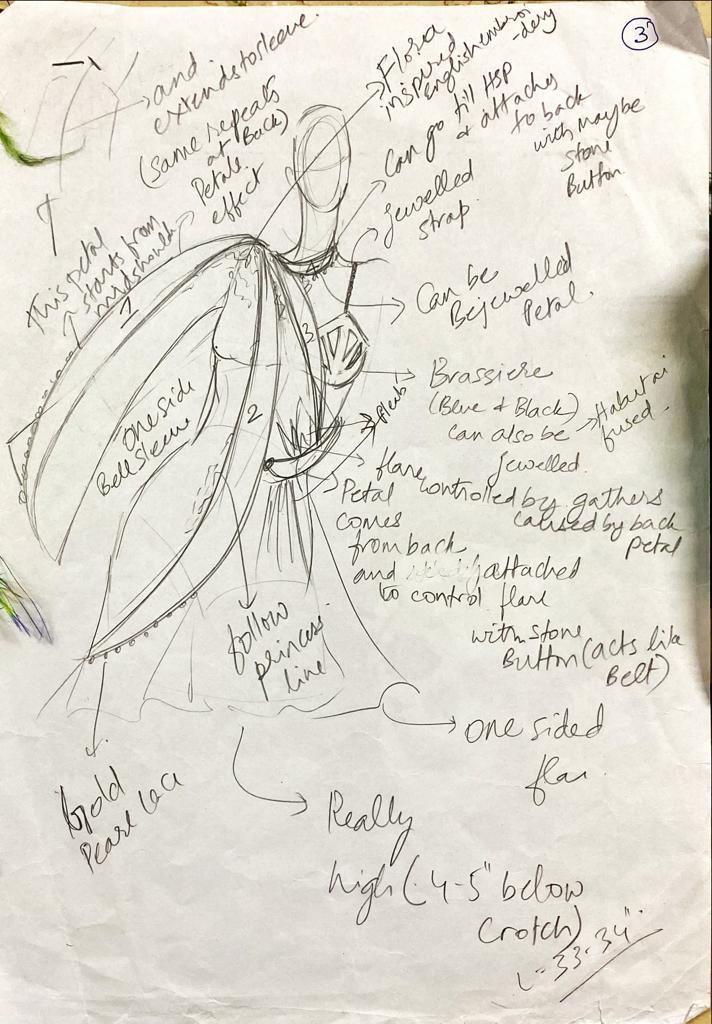
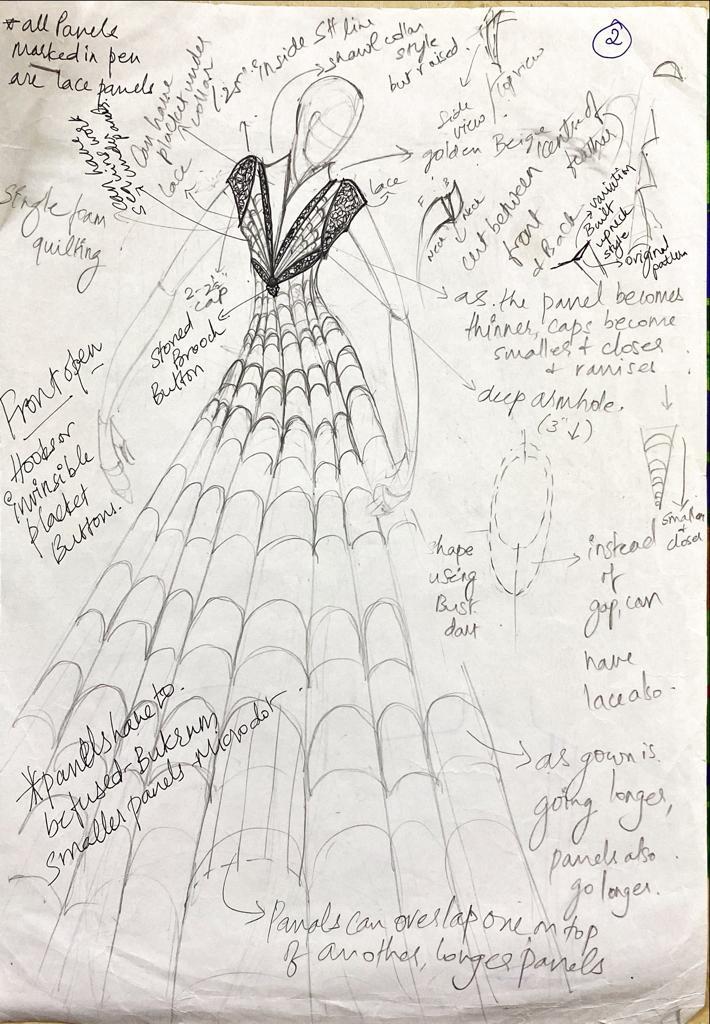
Here I am attaching the croquis/illustration of my previous collection along with all details. Please note, I did use the left design as is without making any changes, to my collection, whereas the centre design went through a lot of changes and I didn’t use the design on the right itself.
Of Course! we can even cross combine elemental ideas or entire products/garments from our previous/present designs/croquis along with the combination of new products/garments for the collection as an ensemble as long as they relate to our concept/ideas/forecast.
Ps: Adding some technical detail of the elemental details to your croquis is always a plus point here, in case, for future reference on how some small complications can be accomplished at the later stage of sampling/manufacturing.
Step 6 – Final Design Presentation
Finally, the designer/design team will sit on the design table with all the research, boards and croquis put together to select the final set of ensembles to be finalised along (if applicable) with their senior designers/team and work out the final collection which will go on to the next process of manufacturing or sampling the designs. He/She/They will finalise the final set of ensembles that will go on to the collection.
Upon finalising, the designer/design team will go ahead with the specification sheets/tech packs which will give the entire necessary detail of each product to feasibly manufacture the design by the manufacturing team.
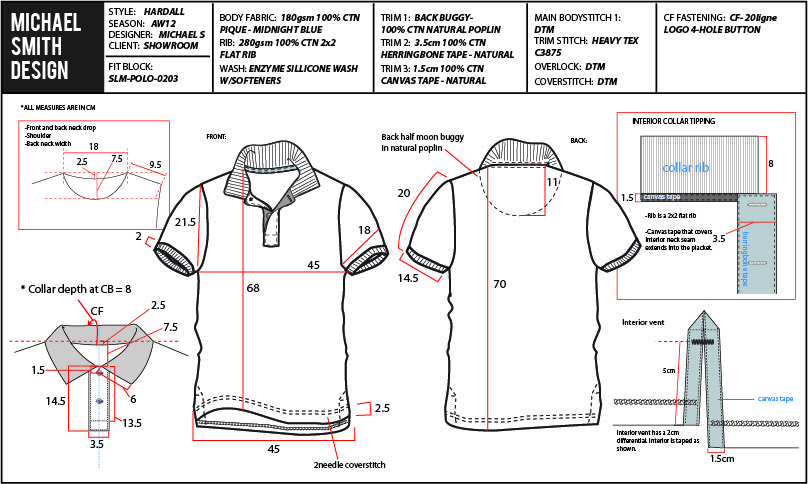
I am attaching a sample of the spec sheet which I have downloaded from https://www.thaisonspgarment.com/FAQ/what-is-a-garment-tech-pack.htm
Please note: Here even at the sampling stage, the design can go through certain small changes to feasibly outline it in terms of costing/design aesthetics.
Feasible Timelines for the above process
For any Brand/label, the above process till the goods are manufactured and transported to the necessary locations as per seasons of fashion is an average of 6 months per season i.e. Seasons being Spring-Summer (January – June) and Autumn-Winter/Autumn-Hiver (July – December). The timelines to follow would be as mentioned below (although it is not written in stone to follow the timelines, but it would be a necessary step especially in the manufacturing sector/seasonal brands, hence, might/might not apply to individual designers)
- Conceptualization & Boards – Market Study (25-30 days) + Conceptualization (5-10 days)
- Conceptual Direction – Understanding and Summarizing the Concept (Max 3-5 days)
- Design Research & Idea Generation (30-45 days)
- Sourcing – Fabrics and trims (15-30 days)
- Design Development (20-30 days)
- Final Design Presentation (max 3-5 days)
Now as we look about the timelines, please note this is an approximate 3-4 month process in all, later which we need to give atleast 45-60 days for manufacturing and merchandising of the finalised styles.
Published by Nageeshwar C/Aphrodite by Nags
An alumnus of National Institute of Fashion Technology, Bangalore and a professor with over 10 years of teaching experience in institutes across Bangalore such as WLC India., Icat India, Iift and Nift, Bangalore, and various other institutes. He has also delivered hours as a guest faculty and also conducts many workshops. A philanthropist through the Round Table India movement. He loves to bike and always enthusiastic to meet new people; and experience new adventures! His interest has always been in the geometry of patterns and loves to play with form. An avid fan of rock, country and pop music, many a time music itself has been his inspiration.
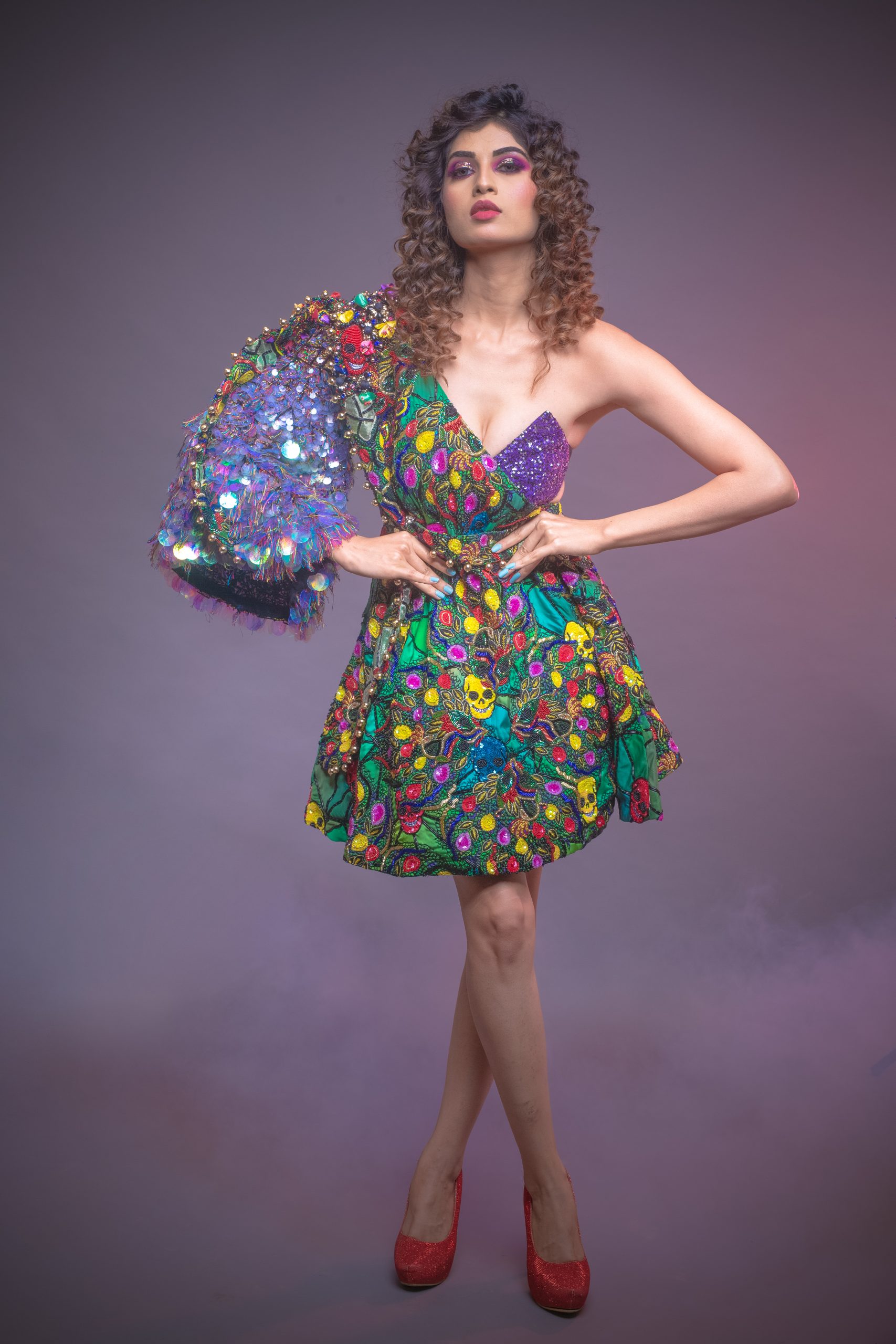
‘8’ Body Shape or the Hourglass Body – What to wear for your body type?
Category | June 05, 2021
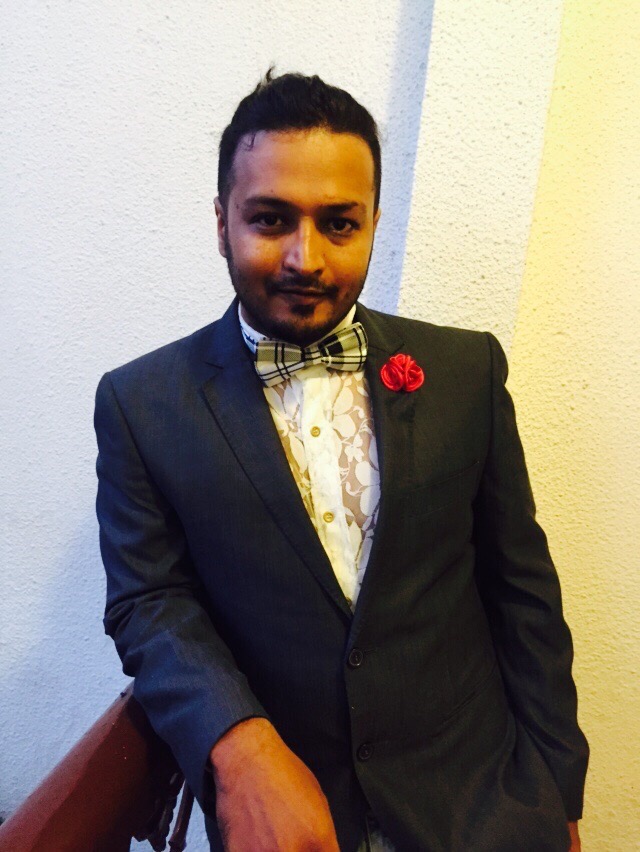
Menswear: Looking Dapper: What to wear: Based on Body Types and Skin Colours: Boys and Men: Menswear plus tips and tricks.
Category | June 05, 2021

Fashion Photoshoots and Collaborations (Collabs)
Category | June 05, 2021

Fashion Designers – What to do and What not to do for young designers and aspiring designers
Category | June 05, 2021

Skin Tones and Colours that suit your skin Tone
Category | June 05, 2021